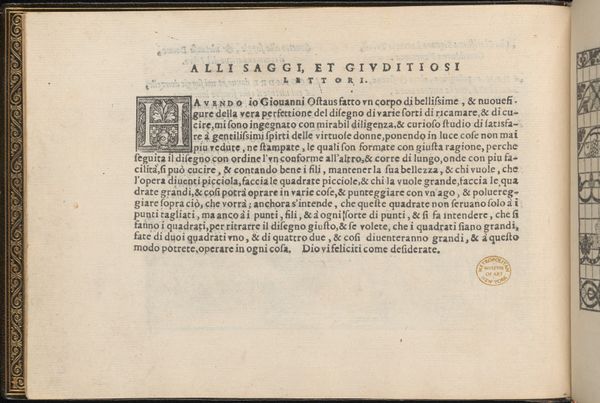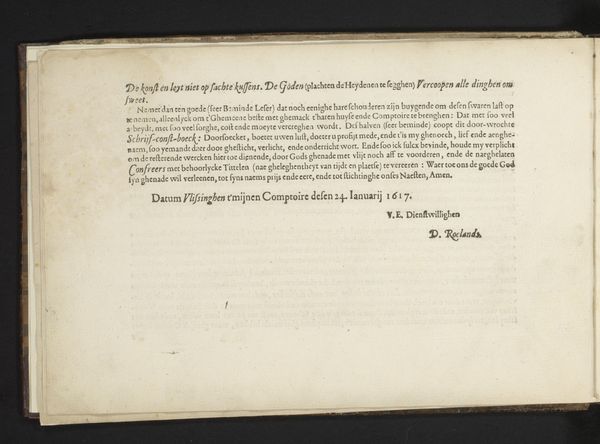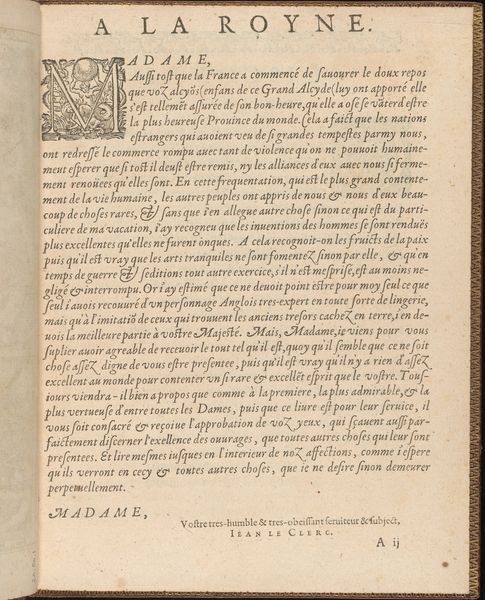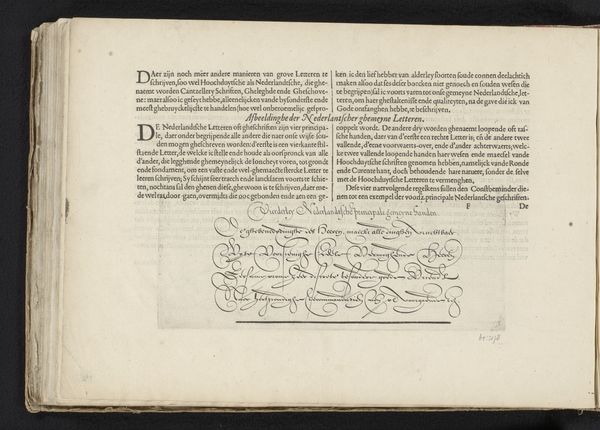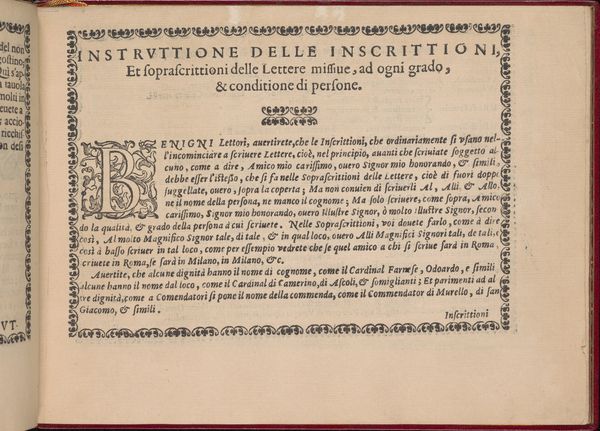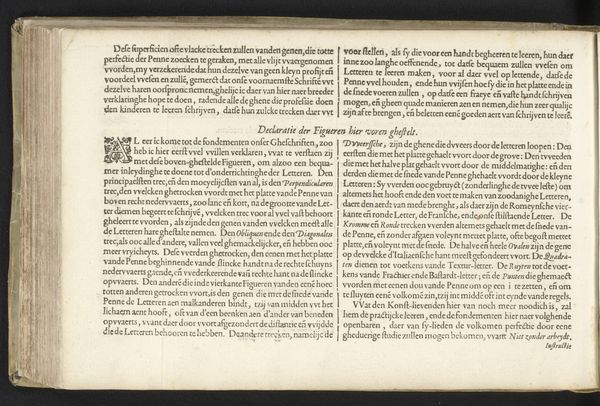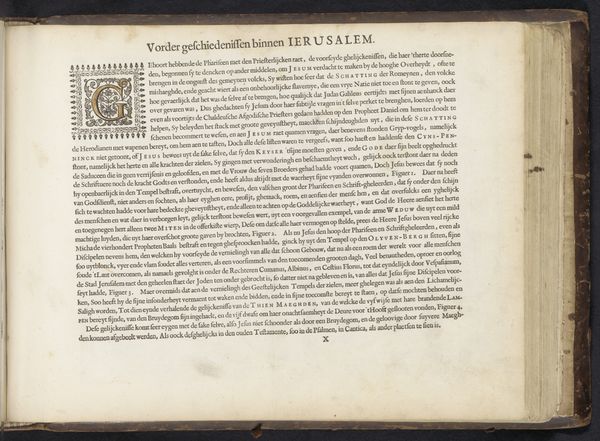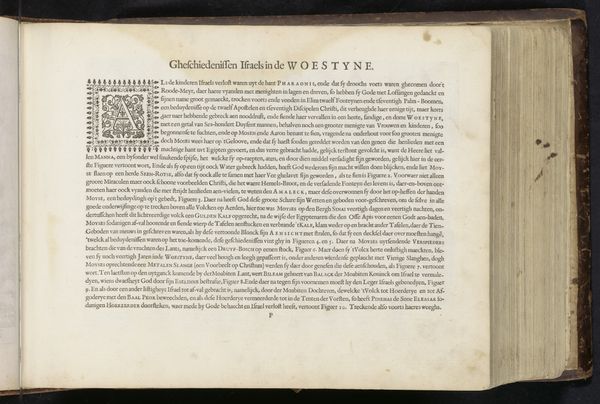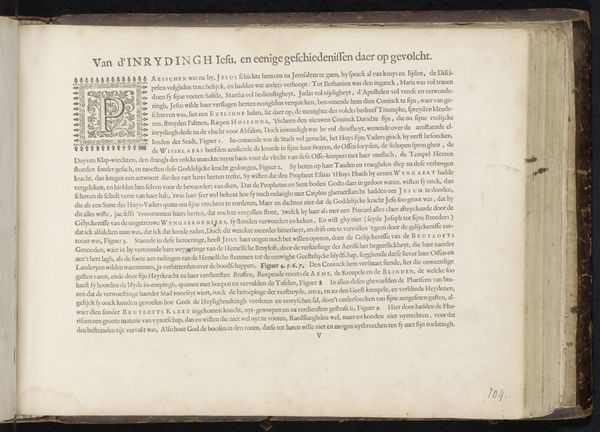
print, textile, paper, engraving
# print
#
textile
#
paper
#
engraving
Dimensions: height 210 mm, width 315 mm, height 42 mm, width 81 mm
Copyright: Rijks Museum: Open Domain
Curator: This page from Jan van de Velde I's "Slot van het Fondement-Boeck," created in 1605, presents a fascinating intersection of text and image through print and engraving on paper. What's your initial impression? Editor: The stark black lettering against the aged paper creates a very formal, almost severe impression. The border at the bottom with the winged figures adds a touch of elegance, but it seems almost detached from the main block of text. What do you see in this piece, beyond the obvious? Curator: Beyond the initial formality, I see a potent commentary on the social position of artists, or perhaps more broadly, the intellectual in society. The artist expresses a desire to please everyone, a need perhaps driven by economic realities and social expectations. The text acknowledges constraints and limitations on their creative freedom – notice the mention of “heer Kort-pennine,” perhaps a patron or figure of authority imposing limitations. This piece invites us to think about labor, the pressures of patronage, and the artist's negotiation of their creative vision within a specific historical and social framework. How does the closing sentiment -- 'Nu’t is volbrocht, heb ic dien meest vergheten' ('Now it is completed, I have mostly forgotten it') -- speak to that interpretation? Editor: That line… it almost sounds resigned. As if the creative process, however constrained, is something the artist needs to distance themselves from once it’s done. So, are you suggesting that this engraving might be read as a form of early modern artist statement or even social critique? Curator: Precisely! It challenges us to look beyond aesthetic appreciation and consider the socioeconomic factors that shaped artistic production. It's a tangible trace of an individual grappling with their position in the world, a negotiation between personal expression and external pressures. And it reveals how art itself is both a product of its time and potentially a subtle form of resistance or commentary. Editor: This gives me a new appreciation for art's hidden layers. Thanks! Curator: My pleasure! It's in uncovering these narratives that art history truly comes alive.
Comments
No comments
Be the first to comment and join the conversation on the ultimate creative platform.


